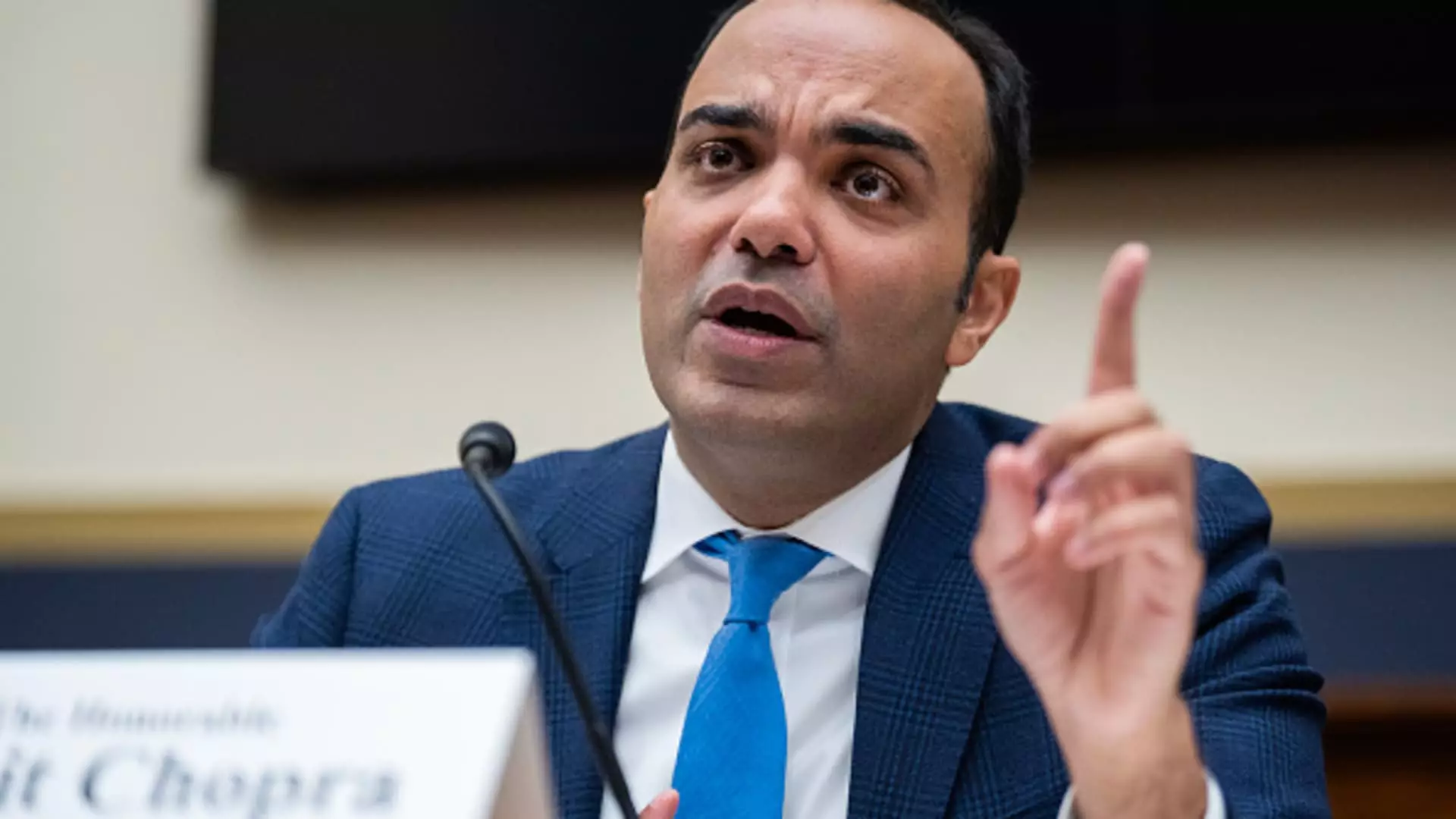In a significant move that aims to reshape the financial landscape for American consumers, the Consumer Financial Protection Bureau (CFPB) has unveiled a final rule targeting the exorbitant overdraft fees charged by banks. This regulation, set to take effect on October 1, 2025, promises to save consumers around $5 billion annually. By allowing banks to charge a nominal fee of $5 per overdraft—a drastic drop from an average of $35—this rule not only seeks to alleviate financial burdens but also looks to ensure transparency in the lending practices surrounding overdrafts.
CFPB Director Rohit Chopra emphasized the necessity of this reform, criticizing major banks for tapping into loopholes to generate substantial revenue at the expense of consumers. The agency’s decision comes as part of a broader initiative to combat what they describe as “junk fees,” emphasizing that transparency regarding interest rates on overdraft loans will be mandatory. The explicit nature of this requirement aims to protect consumers from hidden costs and elevate their financial literacy.
Historically, overdraft fees have been a crucial revenue stream for banks, raking in approximately $280 billion since the turn of the century. However, recent trends indicate a decline in this sector, spurred by major banks like JPMorgan Chase and Bank of America either minimizing their fees or abolishing them entirely. This reaction reflects an evolving awareness among consumers who are increasingly demanding fairer banking practices.
With the CFPB imposing such regulations on banks and credit unions with assets exceeding $10 billion, the initiative recognizes the need for systemic change within larger financial institutions. Smaller banks, which often rely on personal relationships and individualized service, may find themselves in a better position to respond to consumer needs without incurring hefty fees. This shift could encourage a new competitive landscape where customer-centric banking controls borrowing costs more effectively.
Despite the promise of relief for consumers, the rollout of the CFPB’s overdraft rule is anticipated to face considerable resistance from banking lobby groups. These organizations argue that the new regulations could restrict access to overdraft services, potentially pushing consumers toward less favorable alternatives, such as predatory payday loans. The Consumer Bankers Association voiced their concerns, stating that they are actively evaluating strategies to contest the rule.
Moreover, the impending change in political leadership raises further uncertainty regarding the fate of the initiative. With Donald Trump poised to take office in January, the CFPB’s direction could pivot significantly, likely leading to heightened scrutiny or outright opposition to policies enacted during the Biden administration. Instances such as the stalled rule on capping credit card late fees suggest a precarious future for the protections sought by the CFPB.
As we look toward the future, it is essential to consider the broader implications of the CFPB’s efforts. While the immediate financial relief to consumers is a welcomed change, the rule also signifies a shift in how banking institutions are held accountable for their practices. There is potential for a cultural transformation within the banking sector that could prioritize responsible lending over hyper-profitable models that have historically exploited consumers.
The CFPB’s rule on overdraft fees stands as a pivotal step toward enhancing consumer protections in America. It challenges the status quo of banking practices, aiming for a system where financial institutions transparently communicate costs and demonstrate accountability. However, with the winds of political change blowing imminent challenges on the horizon, it remains to be seen how the future will unfold for those advocating for consumer rights in the financial sector. The coming years may dictate whether consumer advocacy will thrive or falter amid a potent lobbying landscape.

